Framing Art doesn't have to be difficult! Have you just acquired an exceptional piece of original art and now you’re looking for the best way to frame it and hang it in your home?
You’ve come to the right place: this ARTicle will cover everything you need to think about when selecting the perfect picture frame for the artwork and for your space.
(If you haven’t found an artwork yet, browse our collection of art on paper and choose your favourite framing style to make it your own. You can also buy art that is already framed (or find some inspiration).)
Whether you have a painting on canvas, a digital print or a drawing on paper you will want it to look the best it can by having it framed professionally. Sometimes you will need to frame your artwork in order to display it (for example, a work on paper such as a print or a drawing) or it will get damaged over time. Or you might choose to frame the work (such as an oil painting on canvas) so that it suits your interior decor or matches the other artworks you have on the walls. Remember that framing your art not only preserves it for the future but also adds value.
If you're looking for a Framer in Cape Town, see our list of the Top 7 Framers in the city.
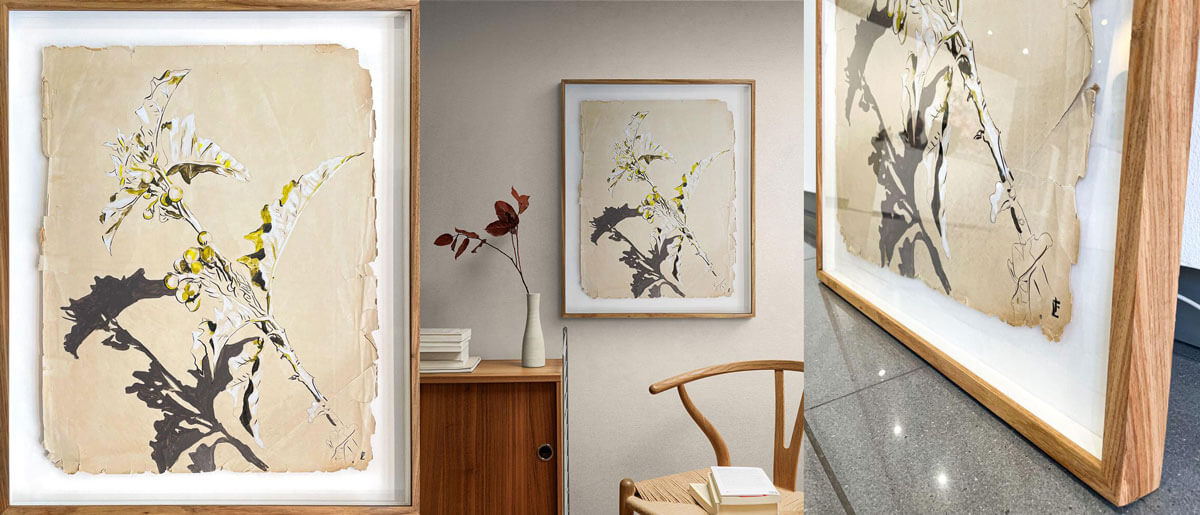 'Deadly Nightshade' by Lisette Forsyth is a painting on delicate vintage paper so framing is necessary to protect and preserve the piece.
'Deadly Nightshade' by Lisette Forsyth is a painting on delicate vintage paper so framing is necessary to protect and preserve the piece.
So here are some questions to help you decide what is best for you, the artwork and your space:
Will framing enhance the artwork?
Today there are so many options when framing your art, but it is important to always remember the purpose of the frame: to complement, protect and enhance the artwork. The art and frame will always be viewed together so the frame should never overpower the artwork. Think about how the frame you add can present the art the most effectively. While it is a good idea to choose a picture frame that is less eye catching than the art itself, remember that choosing frames that are too similar in colour to the artwork, or equally busy in decoration is not. The frame should never compete with the art itself, so at StateoftheART we usually recommend natural wood frames or slim black or white frames as they are the most versatile.
Will the frame suit the room?
Where you will display the artwork is an important consideration when you are choosing the right frame. Think about the space, colours and setting and how the frame will suit the current decoration. For example a modern space with many grey and white hues would do well with a simple monochrome frame; or in a rustic room choosing a natural wood frame could suit both the artworks and the interior furnishings.
Is a frame actually necessary?
In some cases, a frame isn’t needed at all and the artwork can be displayed as is - for example a painting on stretched canvas. However, artworks on paper or more delicate mediums should be framed so that they are sealed and protected from external factors that might degrade them over time.
If you do choose to display a painting on canvas without a frame, make sure that it is stretched properly and has the right depth and shape to sit flat against the wall. Sometimes the artist could have chosen to paint the sides of the stretcher and this will add to the overall effect of the artwork on display.
How can you best preserve and protect your artwork?
Choosing to frame your art not only enhances how it looks but can also add value to the work and preserve it for the future. Together with glass, the frame creates an artificial environment around the artwork and prevents damage from outside factors like humidity and light. Make sure that your framer has sealed the frame well, and discuss with them the different options they offer to better preserve your artwork for posterity (for example using Museum Glass - more info below).
Types of fine art framing:
As you head to your local framer, make sure you understand the different framing options available, what you prefer and what to look out for.
FRAMING PAINTINGS:
Oil paintings on canvas:
Oil paint, unlike acrylic or watercolour, does not dry with water evaporating out of it but rather through oxidation, so generally glass should not be used in the framing of oil paintings as it could trap moisture inside. A completed oil painting might feel dry to the touch and be safe to handle after a few weeks, but it will not be completely dry for decades and the thicker the layer of oil paint on canvas, the more likely it might crack after time. The worst-case scenario is that the oil painting framed behind glass might not be sufficiently dry and cause the canvas to rot as the painting cannot ‘breathe’.
The most popular option for framing paintings on canvas is usually a “shadow box” frame, and it is very often made out of wood. As there is no glass placed in front of the artwork the oil painting needs to have a varnish or sealant applied to the surface, and this is usually done by the artist once the artwork is complete and before the artwork goes to the gallery. The frame could be installed flat against the side of the artwork or with a slight gap (to give more of a ‘shadow’ effect).
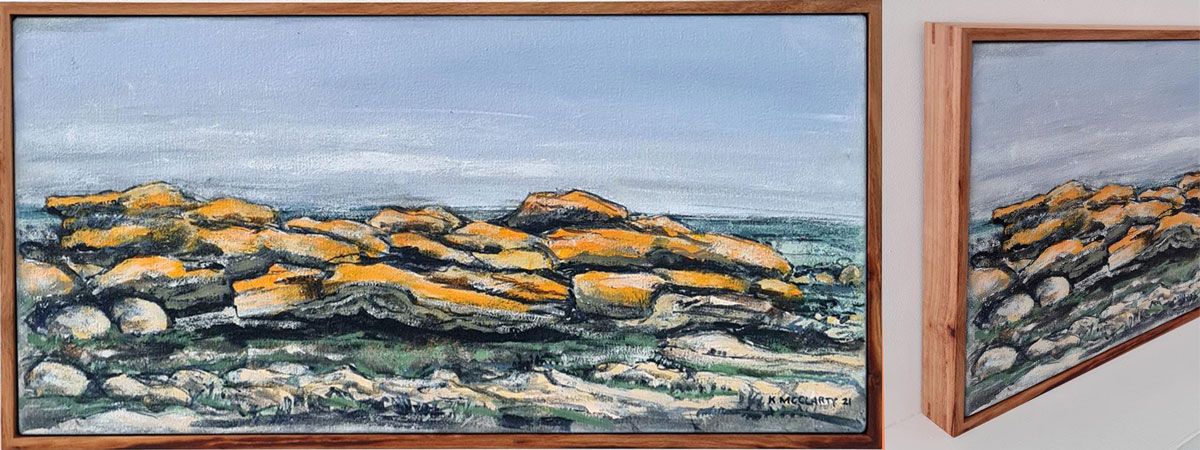
'Yellow Rocks II' by Kristen McClarty is a small acrylic painting on canvas that has been framed in a wooden shadow box frame with a very small gap between the canvas and the frame.
Oil paintings on board can be framed similarly to canvas in a wooden frame, and sometimes with a slightly larger gap to add interest. To frame a painting on board, the frame will be built up on the back, to fill in the space behind the board and this can often result in the finished framed artwork being quite heavy.
When choosing the colours for the painting’s frame, note what the dominant colours in the painting are and think about how the frame could complement the overall composition and the location it will be placed in.
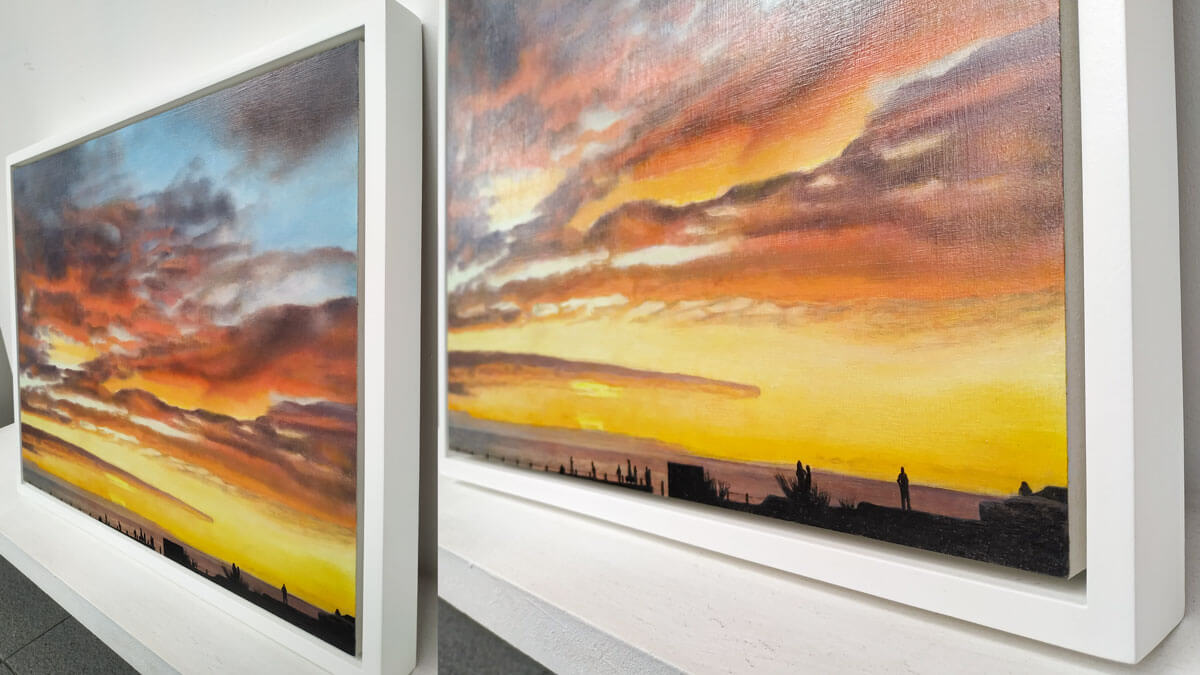 'The Collective Sigh' is an oil painting on board by Catherine Ocholla. The sides of the board are painted white and the white shadow box frame helps to emphasize the details and magnificent colours of the painting.
'The Collective Sigh' is an oil painting on board by Catherine Ocholla. The sides of the board are painted white and the white shadow box frame helps to emphasize the details and magnificent colours of the painting.
FRAMING ART ON PAPER AND OTHER DELICATE MEDIA:
Art on paper (such as watercolour paintings, acrylic paintings on paper, photography prints or printmaking) needs to be framed to protect it from moisture and sunlight or it will deteriorate over time. If the artwork medium includes more perishable mediums such as pastel, graphite or charcoal it will also be more delicate to handle and requires careful protection from damage and degradation.
There are a few options when framing your art on paper:
Mount and Mat board:
Framing your art on paper using mount board or mat boards really helps to conserve more dainty or fragile artworks. The artwork is attached to a sturdy mount board behind it to reinforce it and a mat board with a window cut into it is placed on top of the work, to hold it in place. The mat board also helps to create a gap between the paper artwork and the glass, as the glass should never touch the artwork directly or condensation could gather and mould/mildew could form. Placing the mat board on top of the paper artwork in this way helps to flatten the original artwork, prevents it from rippling and creates the gap between the artwork and the glass which is crucial.
Note: Artworks made using pastel on paper usually include a bigger gap between the artwork and mat board so that the dust from the pastel medium falls down and doesn’t gather on the bottom edge of the artwork.
When deciding on mount boards, you can choose between regular or acid-free options and mount boards come in a variety of colours to suit your artwork. Acid-free mount board is usually a lot more expensive but lasts much longer without deteriorating and so it is necessary when framing works for a museum.
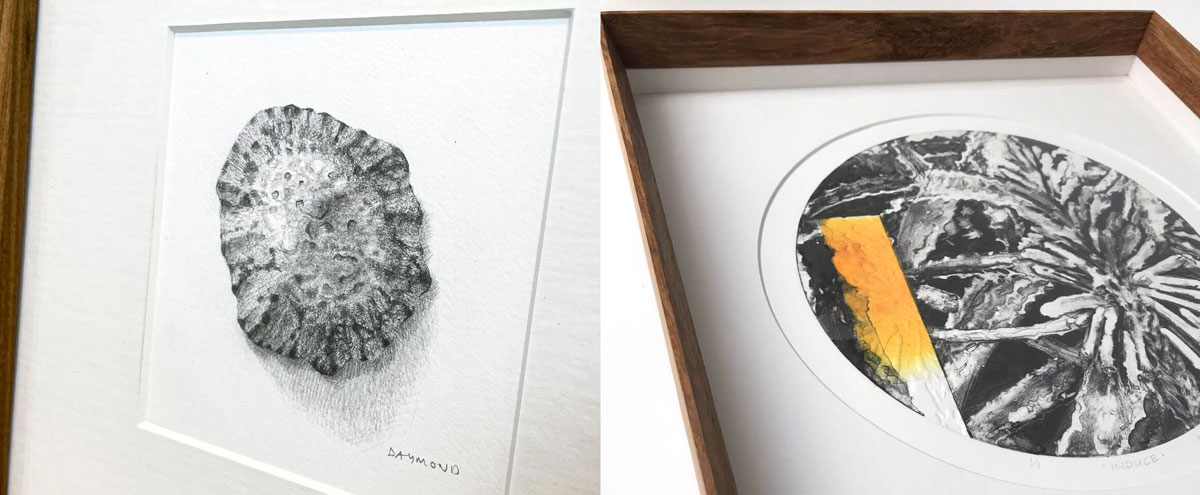
Two examples of framing art on paper using a mat board. Karin Daymond's small pencil drawing looks neat framed in white and Noeleen Kleve's montype printmaking is framed using a circular matboard to emphasize the edges of the print and signature and edition details.
Float mounted:
The second option you have when framing your work on paper is to ‘float mount’ it, so the artwork appears to be floating inside the frame. This is achieved by attaching a piece of foam core behind the artwork using acid-free double sided tape. There should still always be a gap between the paper artwork and the glass. This is a very popular option and many artists at StateoftheART choose to frame their paper artworks this way to show the edges of the paper.

Lisette Forsyth often chooses float mounting to frame her paintings on maps or newspaper, giving the illusion that the paper is floating inside the frame and showing the age and delicate edges of the antique paper.
Jo Roets also frames her clay artworks like this to emphasise the shadows created by her delicate sculptures:
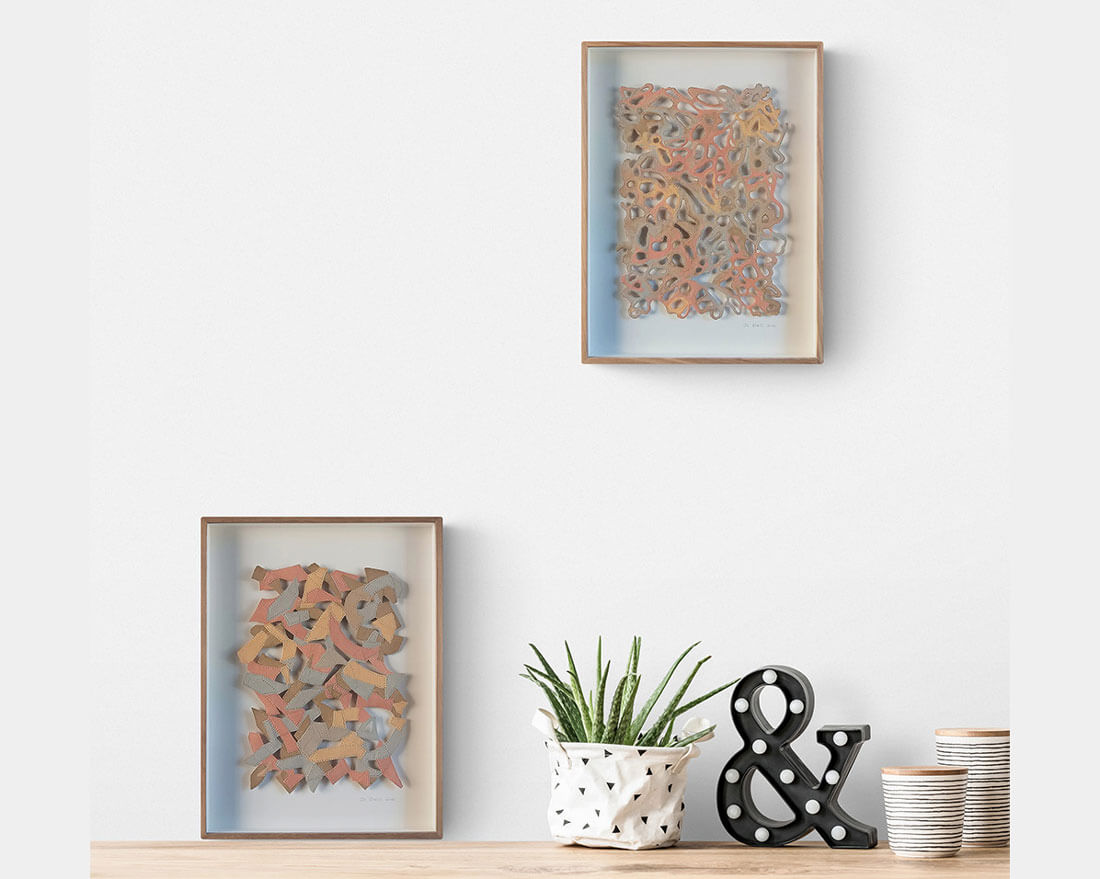
'Stitching Time' by Jo Roets.
The last option for framing a paper artwork is a ‘Floating Frame’. This is when the artwork is placed between two Plexiglas sheets and held in place with metal wall mounts or ‘stand offs’. This could be a very effective method of framing if you would like to see light through the paper work, or to suit a textured wall where the artwork will be installed - for example on rustic face brick.
More about GLASS:
There isn't just one type of glass! Think about what you need and want out of your framed art and choose the correct glass for the job.
Regular glass - usually 2mm thickness
Plexiglass - as good if not better than glass, although more expensive. The standard thickness of plexiglass when framing art is 3mm and it is much more resilient and will not break as easily as glass does - this could be important if you are planning to move or ship the framed artwork a lot, or travel with it. Plexiglass is also more protective against UV rays than glass is.
Museum Glass - the best protection you can give your artwork, but unfortunately it comes at the highest cost! Museum glass protects against the damaging effects of UV light, preventing stains from forming on the paper artwork and any deterioration caused by the sun. It also does not show reflections, so it will not interfere with viewing the surface of the artwork.
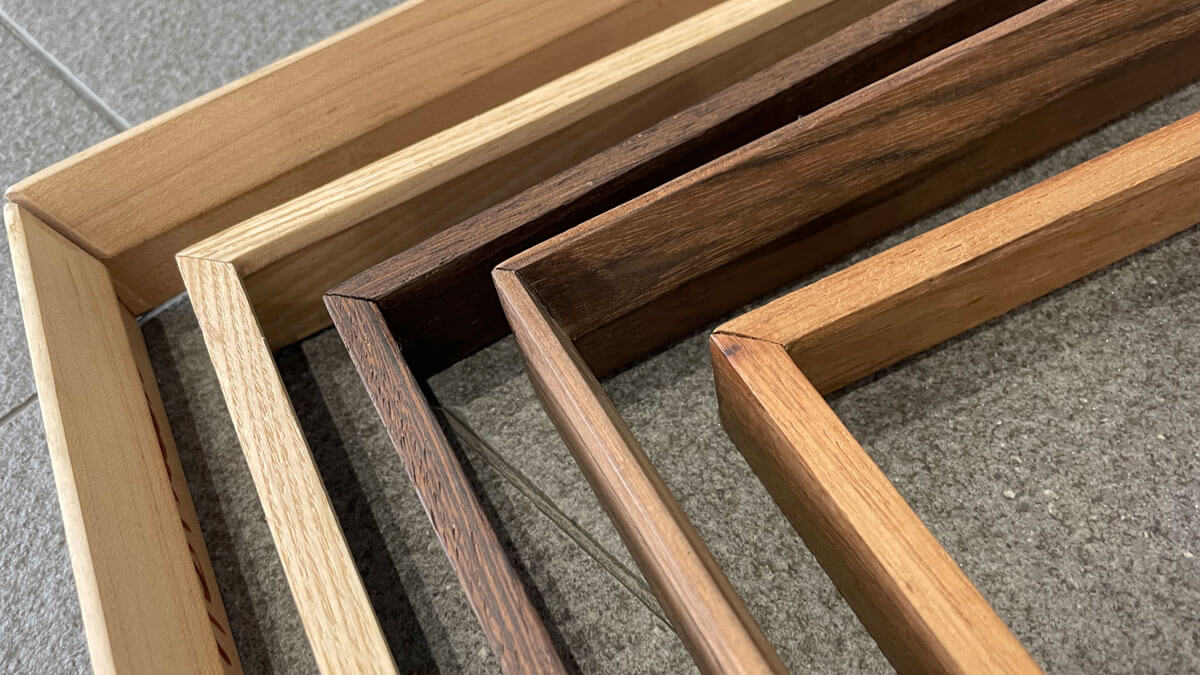
Examples of wooden frames and frame profiles.
More about the exterior parts of the frame:
The exterior look of the frame is called the moulding or the frame finish and this could be natural wood, stained wood, painted, synthetic or metal (usually aluminium). Ask your framer what they offer and take a look at all the colours and sizes available to you. Bear in mind that the size of the moulding should not only complement the aesthetic, but also be a suitable strength because it needs to be able to carry the artwork. Traditionally a wood frame is better as it is stronger than other synthetic materials.
Some options or types of wood frames you might find are: Kiaat, Ash, Oak, Beech, or Maple. You will also be able to choose the frame profile: this is the shape of the exterior moulding, for example if it is square, ornate or very deep, usually called a box frame.
The back of the frame should be taped up neatly when you receive the final framed artwork and a hanging mechanism already precisely installed. The two main types of hanging mechanisms you might find are ‘D-rings’, which could be connected to a nylon cable or string, or ‘Sawtooth Hanger(s)’. Both are perfect for installing your artwork using nails or screws into your wall, but bear in mind if the artwork is going to be placed in an area with a lot of movement (for example a stairway with people walking past) or a very breezy room, try to choose an option without a string (such as Sawtooth hangers) as this is will keep the artwork more flat against the wall and prevent any movement.
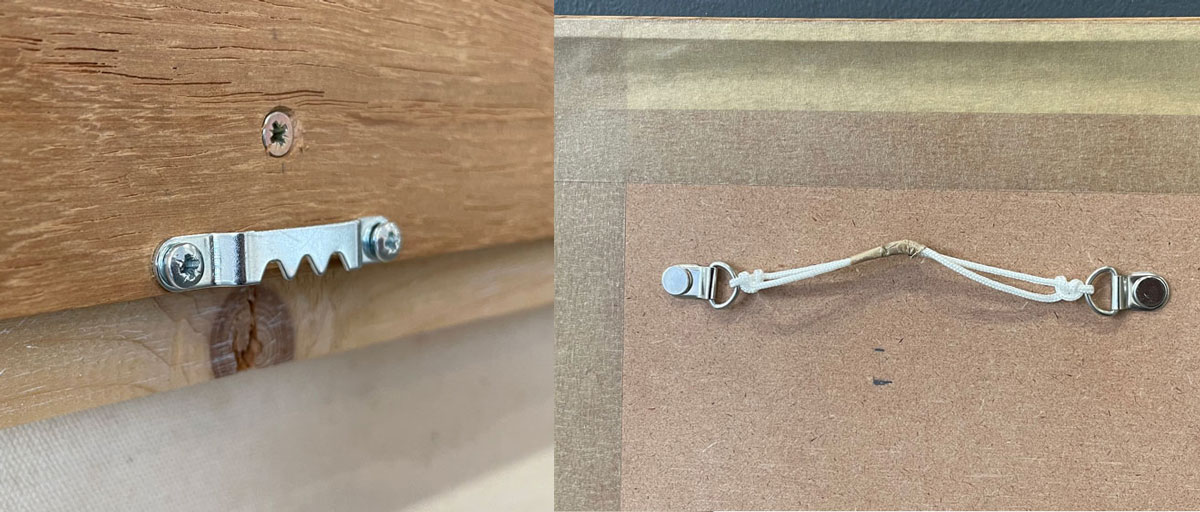
Examples of two types of hanging mechanisms you might find at the back of your framed artwork: a Sawtooth Hanger and D-rings with a string.
Think about where the art will be hanging in your space and what frame will enhance the artwork the most. Here are some examples to get you started:
A print by Lisette Forsyth framed in a rustic wooden frame to suit this laidback and light lounge area: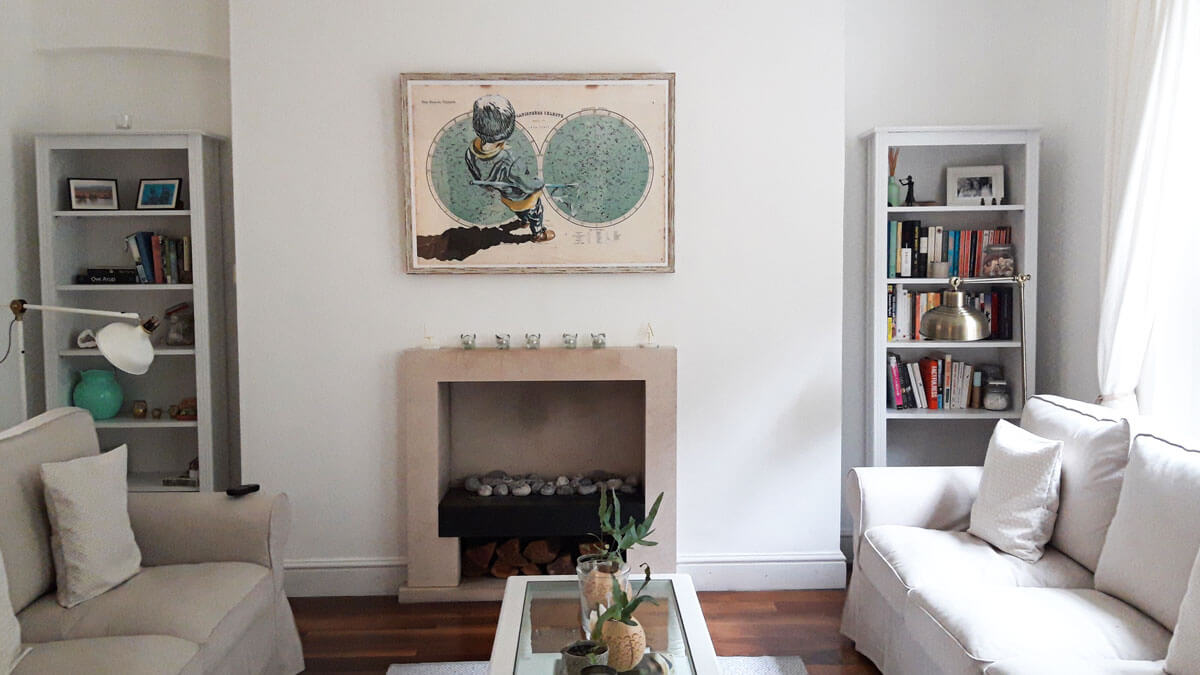
A strong black frame that makes the colours in this portrait painting by Claude Chandler pop and suits the metal doors on either side: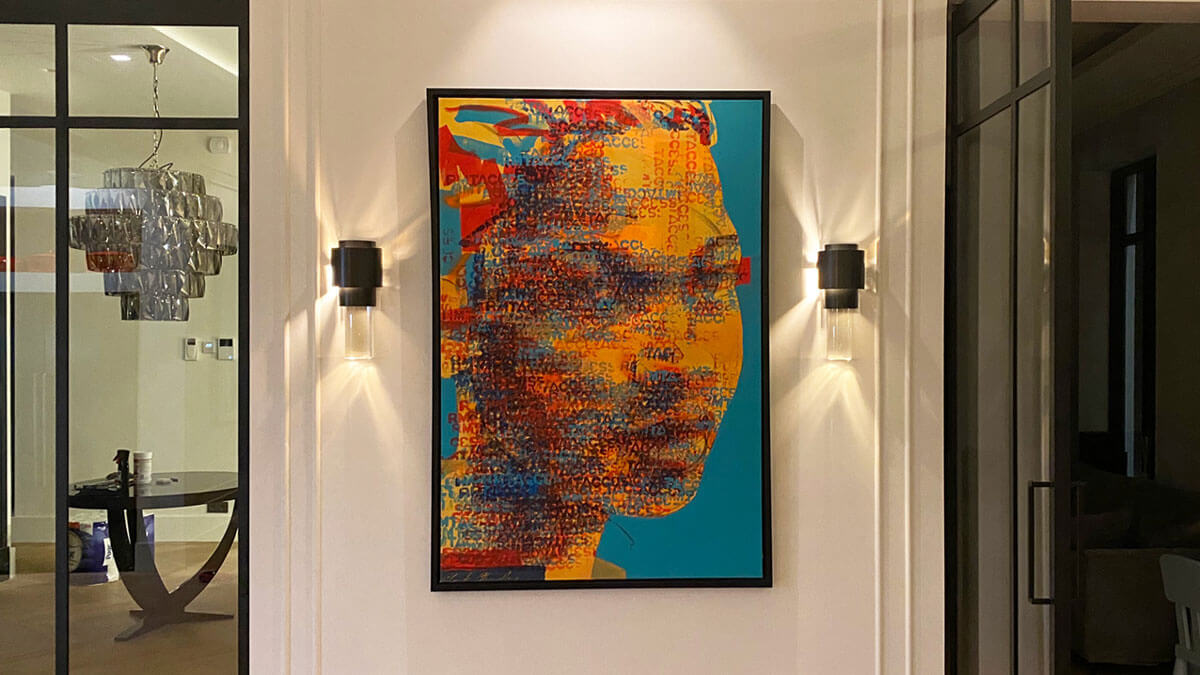
Choose to hang a collection of different artworks together, all framed in a similar way such as this arrangement on show at the StateoftheART Gallery Showroom: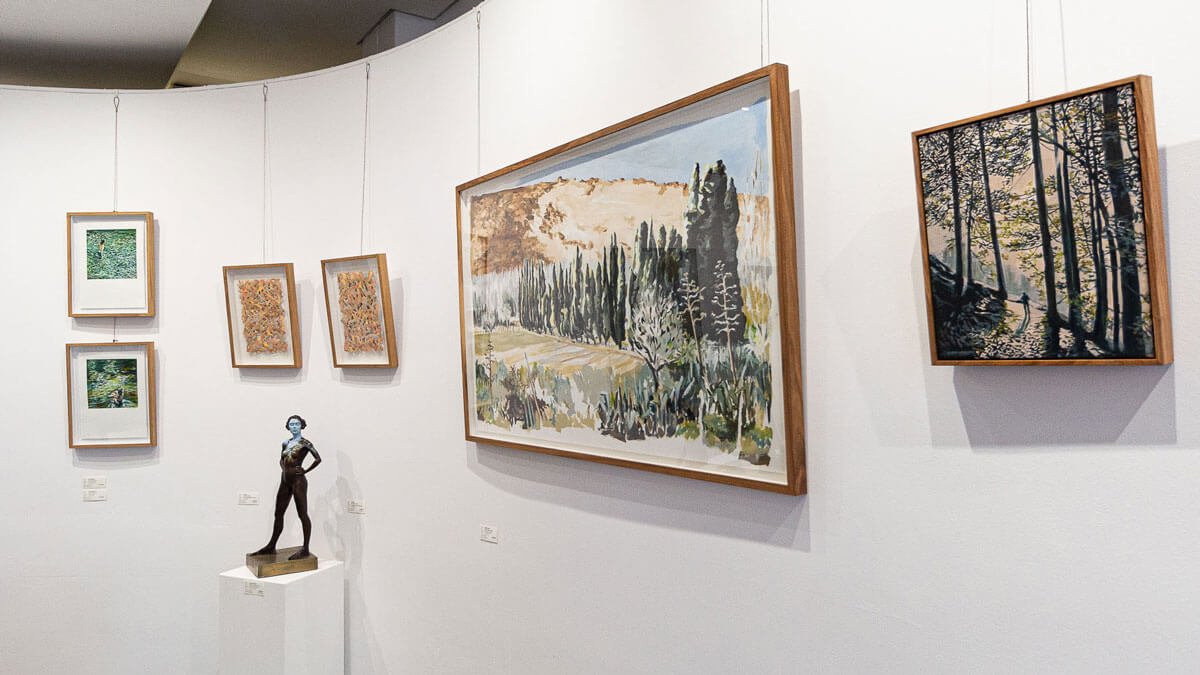
So now you are ready to frame your beautiful artwork! For more ideas and inspiration, take a look at our collection of framed contemporary artworks for sale online here. Or browse our selection of art on paper, ready for you to select the perfect picture frame.
Go ahead and book a consultation with a Framer near you! See our list of the Top Framers in Cape Town.
We would like to say a huge thank you to Artland who gave us these tips and insights into how the framing process works. Visit their website here.

